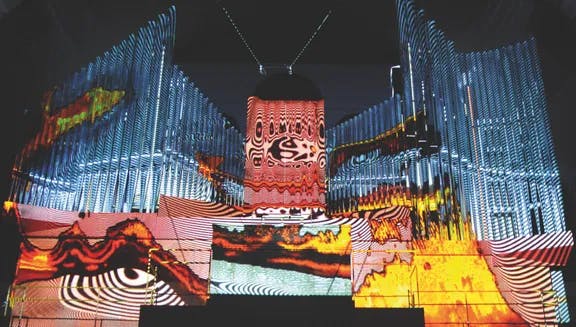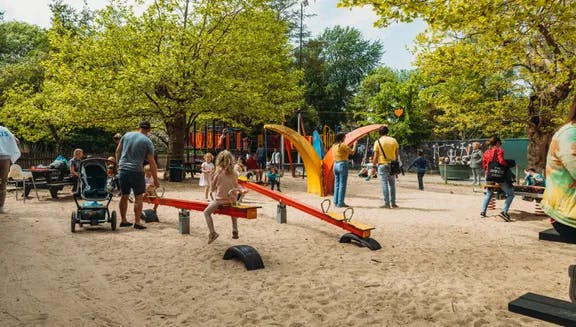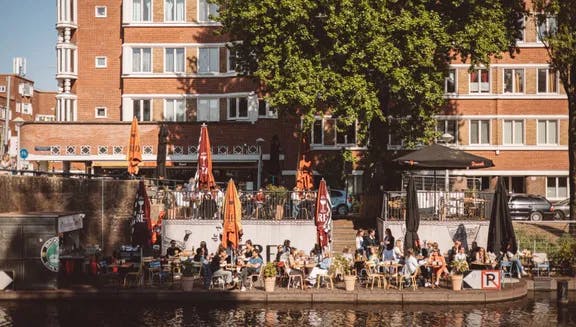
Oud-West then and now
Then: vacancy and revolt

In mid-century Amsterdam, a desperate need for housing bred defiance among residents. A housing crisis – brought on by a post-war baby boom and economic decline – meant the city faced a severe shortage, even as many buildings stood abandoned. Squatting (occupying a property without legal claim through ownership or tenancy) emerged out of necessity and quickly became part of Oud-West’s identity. By the 1980s, squatting had evolved into a powerful anarchist social movement. Its logic was simple: what is abandoned should be reclaimed. It wasn’t just about shelter; it was about autonomy, about demanding space in a city increasingly hemmed in by bureaucracy and capital. While most of these buildings were eventually purchased and the squatters were driven out, some vestiges remain: OT301 and OCCII, once illegal squats, have transformed into legitimate cultural hubs that continue to champion independent thinking and resistance.
Now: cosmopolitan cool

Over the years, Oud-West has become one of the city’s most desirable neighbourhoods. Old and new haunts harmonise along the Overtoom and Kinkerstraat, two of the area’s main arteries. Visitors and locals alike flock to spots offering some of the city’s finest in food and entertainment—such as De Hallen, home to the wildly popular Foodhallen and Filmhallen, as well as the much-loved open-air Ten Katemarkt. The neighbourhood’s abundance of coffee spots, intimate bars, speakeasies, and trendy restaurants captures the refined yet unpretentious charm of Oud-West, a place that beautifully balances its anarchist heritage with contemporary reinvention.
Related articles

Art and culture in Oud-West

Family and kids in Oud-West

Things to do in Oud-West

Nature and active in Oud-West

Restaurants and bars in Oud-West

Old Meets New walking route

Best terraces in Amsterdam West

Apartment owners’ associations (VvE)

Rent property in the Amsterdam Area
